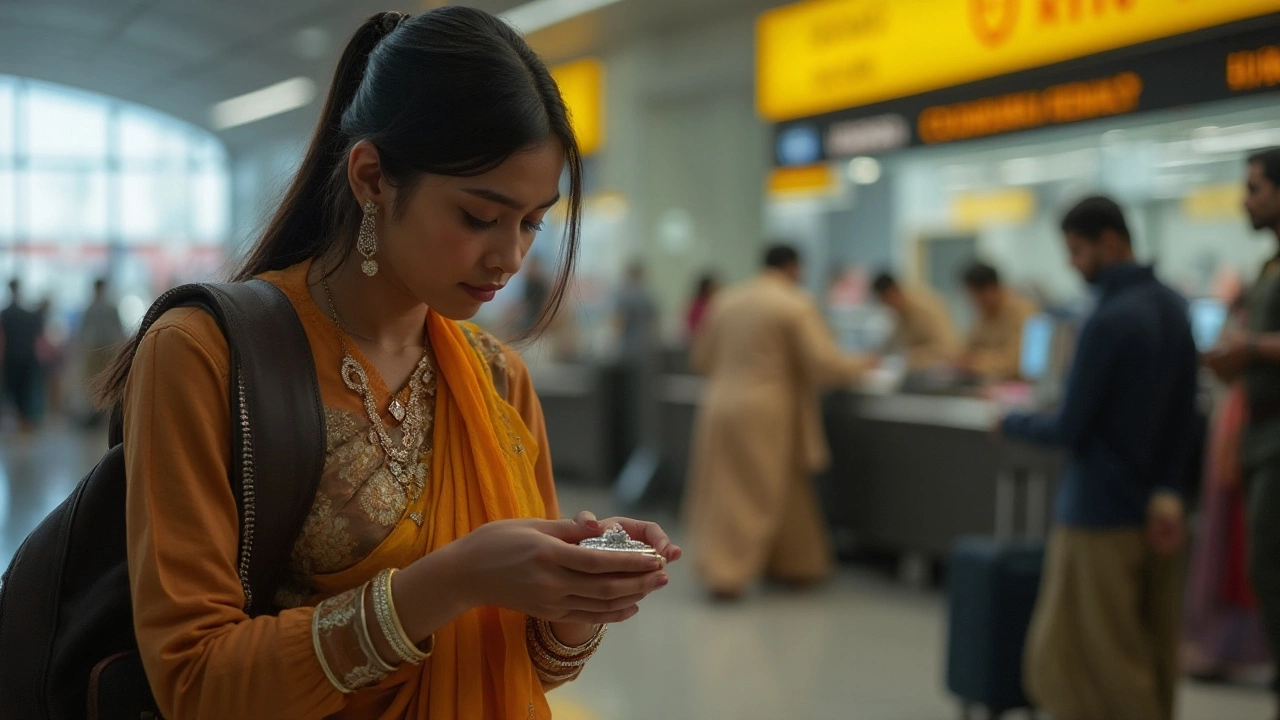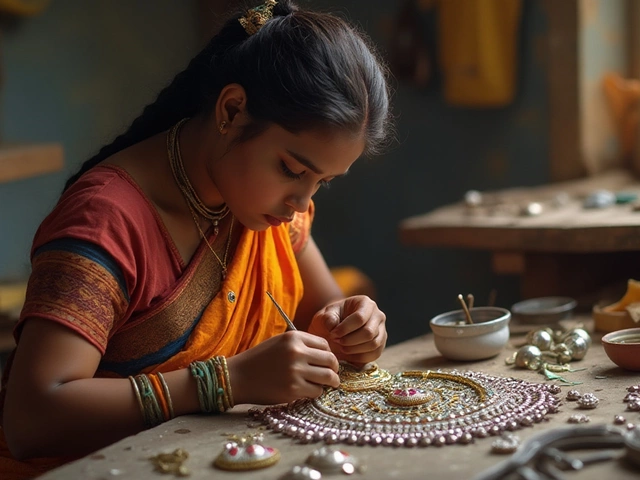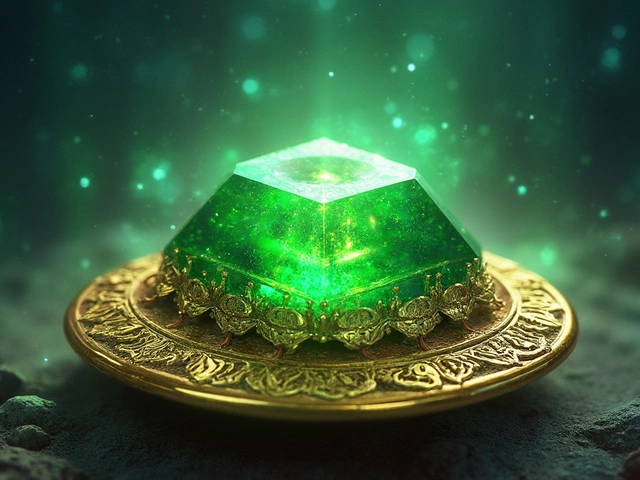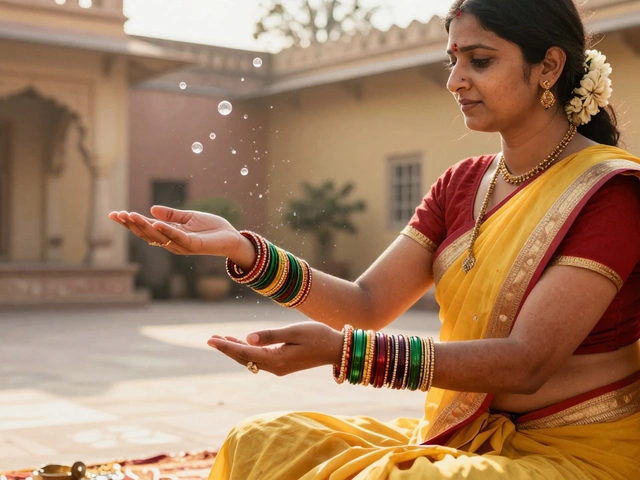When planning a trip to India with a sparkling companion in hand, like a diamond ring, it's essential to navigate the customs landscape efficiently. This precious cargo requires more than just careful handling; understanding the rules and regulations governing high-value items is key to a hassle-free experience. From declarations at the border to duties and taxes applicable on your bling, being informed makes all the difference.
Beyond the technicalities of importing, consider the cultural significance of diamonds in India—a country rich in heritage and tradition. Delve into what it means to carry such a jewel in both a practical and cultural sense, ensuring that your journey is both lawful and thoughtful. As alluring as the gem itself, the process becomes simpler and more secure with the right preparation.
- Understanding Customs Regulations
- Import Duties and Taxes
- Documentation Required
- Safe Transport Tips
- Cultural Considerations
- Local Perspectives on Diamonds
Understanding Customs Regulations
Traveling to India with a diamond ring invites a thrilling adventure, but it also requires a keen grasp of customs regulations. When crossing borders with high-value jewelry, clarity on customs processes is crucial. India's customs authorities take particular interest in luxury items like diamond rings, given their significant value and the potential for undeclared imports. It's vital to declare your diamond ring at the port of entry to avoid fines or confiscation. Accurate declaration isn't just a legal responsibility; it's a move toward peace of mind, ensuring you enjoy your time in India without complications.
The intricacies of customs regulations are frequently updated, keeping pace with global trends. Research is your friend; visit the Indian customs website before departure to check the latest obligations for diamond importation. The regulations typically require travelers to declare jewelry items at the red channel during customs clearance. Depending on the assessed value, customs officials may levy a duty, which sometimes reaches 36.05% for items exceeding the limits for free allowances. This charge underscores the importance of preparing financially before journeying with your valuable gem. As daunting as the rules may seem, they serve to support the legal and economic balance of international trade.
Proper documentation is another cornerstone of compliance. Have your purchase receipts or valuation certificates ready, as these documents verify both the ownership and the authenticity of your diamond ring. Ensuring that your paperwork is in order not only speeds up the process but also fortifies your credibility with customs officials. It's a simple yet effective strategy to assert your lawful ownership, protecting both your asset and your travel plans.
The experience of navigating customs becomes less intimidating when approached with diligence and foresight. As renowned author Arthur Hailey once said, "Good judgment comes from experience," and the simplest approach to gaining such experience is preparation. By familiarizing yourself with the customs landscape and being proactive about your responsibilities, you transform what could be a taxing ordeal into a seamless experience.
| Step | Requirement |
|---|---|
| 1 | Declare at the red channel at Indian customs |
| 2 | Provide accurate valuation documents |
| 3 | Prepare for potential duties based on valuation |
Import Duties and Taxes
When traveling to India with a diamond ring, understanding the import duties and taxes is crucial for ensuring your precious jewelry makes a legal and smooth entry into the country. India's customs policies are designed to manage the flow of goods, including high-value items like diamonds, into the country effectively. As a traveler bringing a diamond ring, you'll need to be aware of the specific duty limits and the procedures for declaring such items to avoid any legal obstacles.
The Indian customs department sets a certain allowance for duty-free import of personal items. However, travel with diamonds as part of your jewelry collection typically exceeds this allowance, making it subject to import duties. As of the latest guidelines, travelers can bring jewelry valued up to ₹100,000 for ladies and ₹50,000 for gents duty-free, provided they have lived abroad for more than a year. If your diamond ring's value surpasses these prescribed limits, you'll be required to pay a duty of around 38.5% on the excess amount.
Keeping up-to-date with these figures is important because regulations are periodically updated. It's advisable to check with official resources like the Central Board of Indirect Taxes and Customs for the most accurate and current information. This task ensures compliance and helps avoid any unexpected financial burdens upon arrival. Remember, it's not just about the monetary value but also adhering to the legal formalities to keep your journey stress-free.
"Navigating through India's customs requires both strategic planning and vigilance. Always declare your valuables honestly, as transparency will save you from future headaches," advises a seasoned customs consultant.
The declaration process for your diamond jewelry involves presenting a detailed invoice or receipt showing the purchase value of the diamond. This document helps customs officials accurately assess the duties owed, if any, and also serves as proof of ownership. Carrying this paperwork can alleviate potential conflicts and misinterpretations at the customs check-points. Ignoring these procedures, in hopes of saving time, often escalates issues, leading to hefty fines or worse—confiscation of your precious stones.
If you think handling all this documentation is cumbersome, consider hiring professionals who specialize in customs clearance. They can offer guidance and ensure all paperwork is in perfect order, which is a worthwhile investment for travelers with high-value jewelry. These experts can facilitate the clearance process and avert any unintended delays, allowing you to focus more on enjoying your trip rather than tackling bureaucratic challenges.
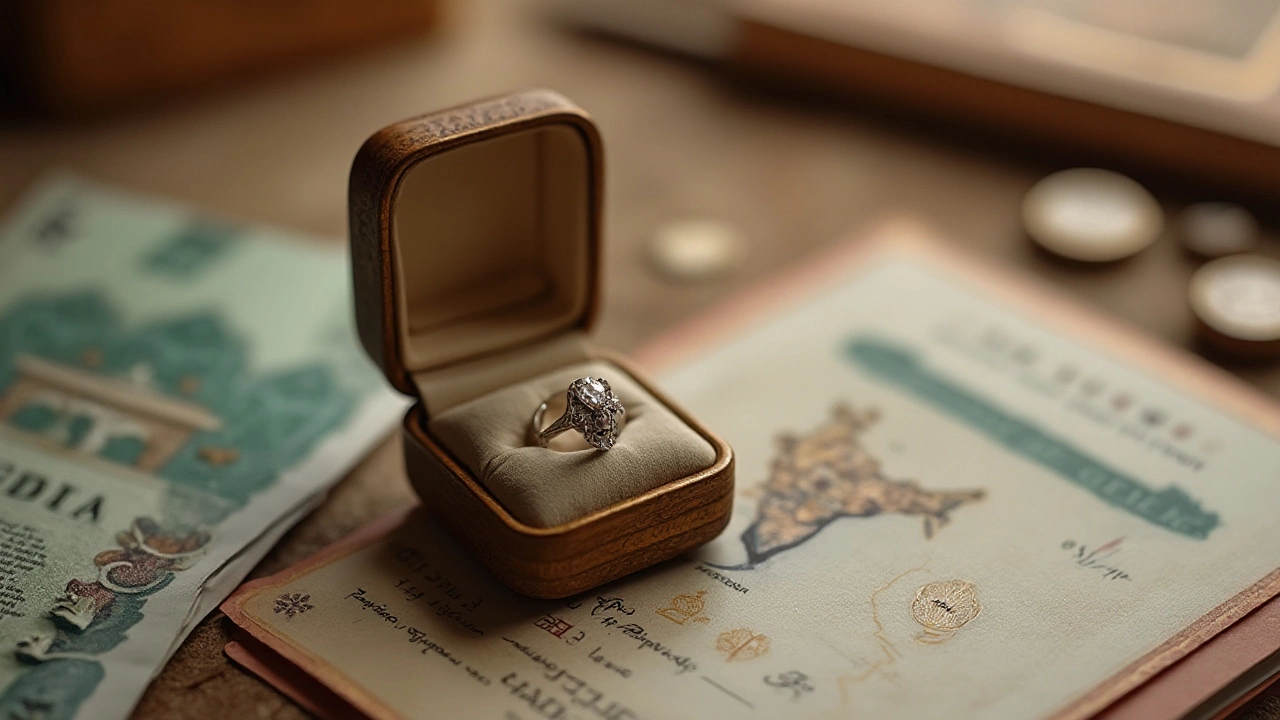
Documentation Required
Navigating the process of bringing a diamond ring into India involves more than just having a keen eye on its radiance. Understanding the necessary documentation is pivotal to ensure a smooth entry through customs. First and foremost, the Customs Declaration Form is an essential document that you'll need. Upon your arrival, declare any jewelry exceeding the specified value to avoid any legal hurdles. This form serves as both a declaration and a declaration of intent to abide by the local regulations, which include any applicable duties on high-value items.
The Ring's Purchase Receipt or Invoice is another crucial piece of paper you'll need to keep handy. This provides indisputable evidence of the ring's value, which is pivotal in customs calculations and evaluations. Ensure that the receipt details are explicit, clearly stating the purchase price, any taxes paid, and the carat details. Having accurate documentation helps in expediting the process, reducing the likelihood of lengthy discussions or even conflicts over the ring's worth.
Additionally, an Insurance Certificate explaining the coverage for the diamond ring is advisable. This not only protects your asset against loss or damage during transit but also offers an additional layer of validity concerning its valuation. An insurance document demonstrates that the ring has been professionally appraised, offering weight to your assertions at customs. When combined with proof of ownership, such as an invoice, your valuation is reinforced, thereby having a less frictional experience moving through customs scrutiny.
For travelers who wish to bring precious jewelry like diamond rings back to India, consulting with a certified gemologist or jewelry expert before travel can be beneficial. These professionals can provide an appraisal report and certification that might serve as an additional layer of credibility in documents. Incorporating expert advice into your travel preparation enhances the legitimacy of your documents, allowing for a greater sense of ease during your travel.
Cyrus Khan, a noted customs advisor, once relayed, "Proper documentation is not just about legality; it’s about peace of mind. Knowing that you have everything in place can make your travels truly stress-free."
Taking pictures of your documents and storing them securely on your phone or a cloud-based service can be an excellent strategy. It offers quick access to your paperwork if the need arises unexpectedly. Although digital copies are typically insufficient for official processes, having readily available references can speed up resolving unforeseen issues. For many travelers, stored pictures serve as both a backup and point of reference for the discussions one might have with customs officers.
This multi-layered documentation approach isn't merely a suggestion but a necessity for those traveling with valuables such as diamond rings. It ensures compliance with India's regulations, making your travel more about the journey rather than the paperwork. Remember to cross-check and confirm the specifics of any updated customs regulations or prerequisites related to your travel dates, ensuring that your documentation remains valid and relevant.
Safe Transport Tips
Carrying a diamond ring across borders, especially to a destination as vast and varied as India, involves a fine balance between ensuring its safety and complying with local customs regulations. The greatest concern for many travelers is the protection of their valuable jewelry. Understanding how to do this effectively can save you from a multitude of worries during your journey. A good starting point is selecting the right type of case for transportation. Jewelry cases with padded compartments offer excellent protection against scratches and damage. It's prudent to choose a travel case that's discreet and does not obviously advertise the value of its contents.
Security measures do not end at just choosing the right case; one must also consider the organizational aspect of storing jewelry. For instance, if your diamond ring is just one piece of a larger collection, it's wise to keep all pieces in separate, transparent bags inside your case. This prevents them from rubbing against each other and getting damaged. Additionally, having photos of each piece stored securely on your digital devices can be incredibly useful. These photographs help in identification and claiming insurance if needed. It is often recommended that you wear your most precious pieces during travel instead of packing them away, ensuring their safety through personal vigilance.
Another valuable piece of advice is understanding the insurance implications while traveling with valuable items like diamond rings. A lot of standard travel insurance policies might not cover high-value items. Thus, it is a wise decision to check if your policy covers your jewelry and, if not, to consider specialist jewelry insurance. Declaring your insured items at customs, if needed, can be facilitated by having copies of purchase receipts and certificates of authenticity. Remember, hefty fines can be enforced if undeclared goods are discovered during inspections. Talking about inspections, did you know that according to the Transportation Security Administration, you can request a private screening if you're worried about your jewelry's privacy during security checks at airports?
According to John Doe, a security consultant at XYZ Protection, "Travelers should consider carrying a certificate of appraisal for high-value jewelry. This can significantly aid in the event of any customs inspection issues, providing clear evidence of value and ownership."To mitigate risks further, mapping out your accommodation and transportation with security in mind is crucial. Hotels with in-room safes or safety deposit boxes offer added peace of mind, as does booking trustworthy transportation services for getting around. This minimizes the risk of losing your valuables during the hustle and bustle of travel. Staying informed about your travel route can help avoid any unexpected detours into less safe areas, something that every traveler should take into account.
Lastly, let your loved ones or trusted friends back home be aware of your travel plans, including accommodations and major stops along your journey. This is not only a good practice for ensuring your personal safety but also provides an added layer of security for your valuable items. Keeping this circle informed allows someone to act promptly should any unexpected situation arise. Think of it as enjoying your travels without taking unnecessary risks, and ensure your diamond ring arrives safely with you to the vibrant and beautiful land of India.
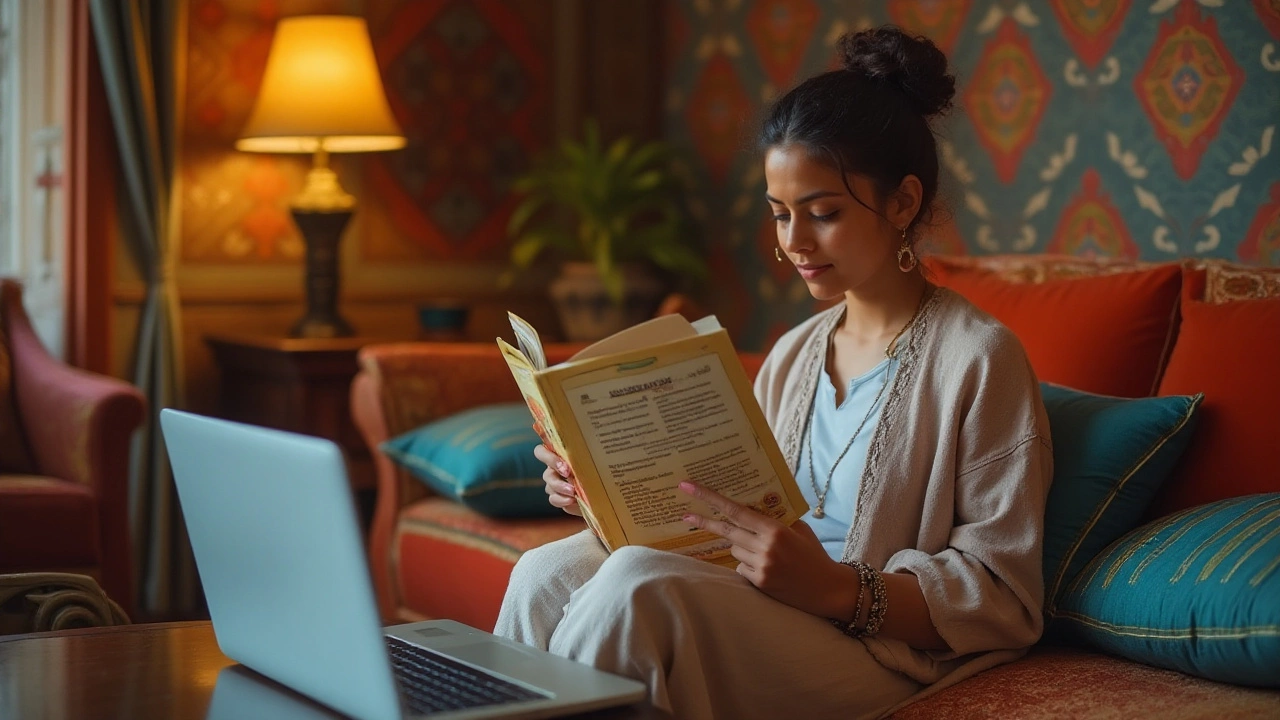
Cultural Considerations
India, with its centuries-old fascination for jewels, especially diamond rings, stands out as a unique destination where these precious items are not just adornments but deeply embedded symbols of cultural values and traditions. In Indian society, diamonds are often seen as an emblem of eternal love and prosperity. They are used to celebrate important milestones such as engagements and weddings, making them integral to social ceremonies. This cultural significance extends to the craftsmanship involved, with India being a leading hub for diamond cutting and polishing, home to the brightest jewels on earth.
Cultural appreciation involves understanding the stories and legends that Indian communities associate with diamonds. Historically, India was the sole producer of diamonds until the 18th century, scattering these bewitching stones over its extensive cultural tapestry. Thus, the allure for diamonds isn’t merely about their market value; it’s about their historic role as treasures fit for royalty and deities alike. For anyone carrying a diamond ring to India, it's intriguing to note that these stones were once considered gifts worth of kings. Ancient scriptures mention diamonds as bringers of power and fortune, encasing in them stories of empires and mysticism.
When visiting India, wearing a diamond ring can spark engaging conversations and admiration since Indians appreciate quality gemstones and their significance. As per a report by the Gemological Institute of America, India accounts for about 90% of the world’s polished diamond output. This statistic reflects not only their expertise but also the reverence and skill devoted to this craft. While showcasing your diamond, it's beneficial to be aware of regional beliefs and values, which can pose insightful encounters with locals who may offer a wealth of information regarding gemstones and their roles in local customs.
Consider the element of gifting diamond rings in India, a tradition embraced with warmth and generosity. The act of gifting is wrapped in rituals that go beyond mere exchanges, often accompanied by prayers and blessings bestowing prosperity upon the recipient. Should you decide to present a diamond as a token, it's an affirmation of an unspoken bond and shared heritage. There's an unspoken etiquette about accepting gifts, where the giver’s intention is seen as one bearing goodwill, and the receiver is expected to reciprocate the sentiment in spirit if not materially, acknowledging the profound respect attached to the act.
“Diamonds are not just a girl’s best friend; in India, they are perceived as sentinels of ancestral values, each cut refracting the narratives of time.” – GIA Journal
Moreover, the economic significance tied with diamond importing cannot be ignored. The Indian gem and jewelry industry is a substantial contributor to the nation’s GDP, with evolved consumer preferences indicating a shift towards designing personalized, culturally resonant pieces. A visit might surprise you with exquisite designs inspired by anything from Mughal history to contemporary fashion, reflecting the myriad tastes an Indian artisan offers. Showcasing your own precious jewelry might invite offers and consultations, as Indians cherish such traditions rooted within both local and global contemporary contexts.
Local Perspectives on Diamonds
India and diamonds have an age-old connection that spans centuries, with the subcontinent being one of the earliest known places where diamonds were prepared and traded. Historically, India's Golconda mines were known for producing some of the world's most prestigious diamonds, including the legendary Koh-i-Noor. The cultural significance of these gems has been woven into the fabric of Indian society, symbolic of wealth, power, and beauty. Diamonds in India are more than just sparkling gemstones; they carry a legacy of opulence and status that continues to thrive in modern society.
Today, diamonds hold a cherished place in various aspects of life, from traditional ceremonies to contemporary fashion. With the increasing wealth and changing lifestyles, especially in urban areas, purchasing and gifting a diamond ring has become a popular expression of accomplishment and love. The market's dynamics here reflect a unique blend of tradition and contemporary trends. This duality makes diamond shopping an enriching experience where one can find everything from intricate traditional designs to sleek modern cuts. In an interview with a leading jeweler based in Mumbai, it was noted that:
"The demand for diamonds in India has only grown with the country's economic surge; it mirrors our aspirations, our dreams of what we can achieve through hard work and persistence."
Interestingly, the diamond trade is closely tied to family businesses, often passed down through generations. This gives a personal touch to the buying experience, where detailed knowledge and passion for these stones are imparted to clients. Across cultures within India, the way diamonds are valued can vary, with different communities associating them with specific rituals or milestones. This cultural diversity contributes to a vibrant market where customer desires and diamond offerings seem to align beautifully, each reflecting a deep-seated appreciation for magnificence. A compelling aspect of India's diamond narrative is ethical sourcing. With rising awareness of ethical issues globally, many Indian jewelers have taken initiatives to ensure the stones are conflict-free, aligning business practices with international standards for responsible gem trading.
There's an increasing trend towards personalization, as buyers look for customization options that encapsulate personal stories or familial motifs. Tailor-made pieces are standing out as popular choices, catering to younger consumers who wish to blend personal narratives with time-honored elegance. In a world where expression is key, owning a piece that is one-of-a-kind has immense appeal. Packaging sentiments within a tactile symbol means that these rings often serve as heirlooms, transcending generations. This notion easy blends with India's broader love for storytelling; thus, diamonds become visual stroked of personal folklore and intimate truths.
While Mumbai and Surat remain hubs for diamond trading and processing, each state in India presents its unique palette of preferences. For instance, South Indian weddings are often resplendent with jewelry set in temple-style, whereas North India may offer a preference for regal, elaborate settings reminiscent of Mughal art. Such variability ensures that no two markets within the country are the same, providing opportunities for endless exploration and discovery. Visitors keen on understanding these intricate relationships could consider engaging with local artisans to appreciate the craftsmanship and regional variations up close.
| Region | Preferred Diamond Style |
|---|---|
| South India | Temple-style |
| North India | Mughal-inspired |
| West India | Intricate modern cuts |
